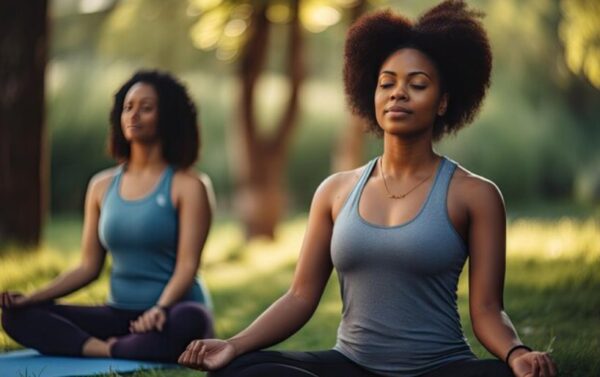Lifestyle
5 people who should avoid doing yoga

Yoga is celebrated as a cure-all, a gentle, healing practice that brings balance to the body and mind.
While that’s mostly true, there’s a side of yoga that often goes unspoken: not all yoga postures suit everyone.
Especially when it comes to complex or advanced poses like headstands, deep backbends, or intense twists, the body can easily be pushed into risky territory.
These aren’t just elegant stretches, they can also challenge the spine, the heart, and even emotional wellbeing if done without caution.
Here are five groups of people who should avoid or modify advanced yoga poses — not out of fear, but out of deep respect for what their body is telling them.
1. Pregnant women (especially in early and late trimesters)
Yoga is recommended for pregnant women to ease delivery and reduce stress. While prenatal yoga can be incredibly beneficial, complex asanas like twists, backbends, and inversions can do more harm than good. In the first trimester, intense poses may increase the risk of miscarriage due to sudden strain or falls. In the third trimester, these postures can put pressure on the uterus, restrict blood flow, or throw off balance — a dangerous mix during this sensitive time.
2. People with hypertension or heart conditions
Yoga calms the heart and lowers blood pressure. Yes, breathing practices and gentle movements help manage blood pressure. But some advanced postures, like shoulder stands, headstands, or deep backwards bends, can actually spike blood pressure due to the reversal of blood flow and strain on the chest.
In such cases, the yoga mat should become a space of calm, not challenge. Seated poses, forward bends, and slow breathing exercises may offer all the benefits without the cardiac risks.
3. Individuals with spine or disc issues
People dealing with herniated discs, sciatica, or post-surgical spine conditions must be extra careful. Extreme poses like wheel pose, cobra, or plow pose can put immense pressure on already vulnerable areas.
Instead of relief, this could worsen the injury or delay healing. In such cases, the body doesn’t need deep bends — it needs stability, support, and slow healing through modified movements.
4. Anyone with unhealed emotional trauma or PTSD
Certain yoga poses can release stored trauma from the body, especially deep hip openers or breathwork practices that trigger emotional memories. This might be therapeutic for some, but for others with PTSD or unhealed trauma, it can become overwhelming or even re-traumatising.
In such moments, it’s not just about physical flexibility, but emotional readiness. Working with trauma-informed yoga practitioners is key. The mind needs the same softness as the body, and not every posture is worth the emotional flood it might unleash.
5. People with vertigo or balance disorders
Those with inner ear issues, vertigo, or neurological imbalance problems may find themselves struggling, or worse, falling, during poses like tree pose, eagle, or standing splits. These postures, though beautiful, challenge equilibrium and can feel disorienting.
In these cases, yoga can still be helpful, but the ground must become a friend. Seated or lying-down postures that support the body can still offer great benefits without the dizziness or risk.
(The information provided in this article is for general awareness and educational purposes only. It is not intended as a substitute for professional medical advice, diagnosis, or treatment. Always consult with a qualified healthcare provider, physiotherapist, or certified yoga instructor before starting or modifying any yoga practice, especially if dealing with medical conditions, pregnancy, or physical limitations)






